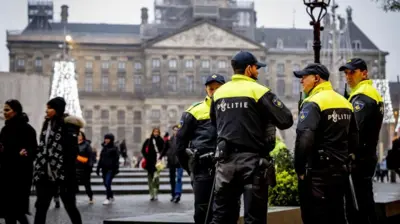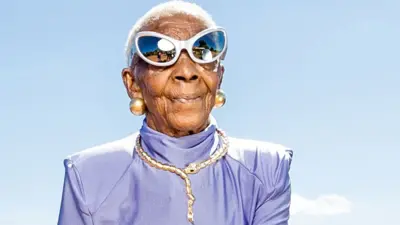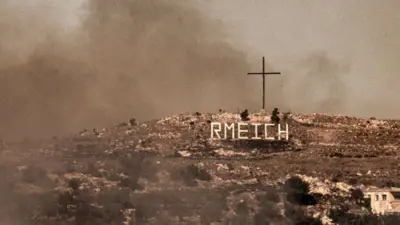We've updated our Privacy and Cookies Policy
We've made some important changes to our Privacy and Cookies Policy and we want you to know what this means for you and your data.
Kumbh Mela: Millions of Indians bathe on most auspicious day
Image source, Uttar Pradesh government
The main day of bathing has been held at India's Kumbh Mela, with tens of millions of pilgrims taking a dip at the confluence of the Ganges and Yamuna rivers.
This is the most auspicious of six bathing days at the event, billed as the world's biggest human gathering.
Hindus believe bathing at the rivers will cleanse them of their sins and help them attain "moksha", setting them free from the cycle of birth and death.
The mela (meaning "fair" in Hindi) has been held in Allahabad city (recently renamed Prayagraj) in the northern state of Uttar Pradesh for centuries now. But it has grown into a mega event in the past two decades.
Image source, Ankit Srinivas
The Â鶹Éç's Vikas Pandey, who is at the festival, said people had arrived from all parts of the country and had walked miles to take a dip. "Every street in the city leading to the mela grounds is flooded with people," he said.
The bathing began at midnight with people chanting "hail mother Ganges".
At dawn, visitors jostled to get a glimpse of the Akharas - different congregations of Hindu saints - who had started their procession.
Image source, Ankit Srinivas
These processions are highly coveted as people line up to see holy men and women perched on top of heavily decorated floats.
"It is so crowded but everyone seemed excited, despite having walked long distances in the cold," our reporter said.
Officials say more than 10 million people have already taken a dip and the number is likely to rise during the day.
Read more about the Kumbh Mela:
Avnish Tripathi, who had arrived from Madhya Pradesh state, walked for five hours from the outskirts of Allahabad city to reach the festival. "Once I got there, I had to wait for two hours to take a dip because of the crowds. But it was a magical experience and I didn't feel tired at all," he told the Â鶹Éç.
Many other devoted pilgrims had walked more than 50km (31 miles) in the hope of taking a dip.
Image source, Uttar Pradesh government
"It has been nearly 12 hours since bathing began but the crowds haven't thinned," our reporter added.
The Naga sadhus are the biggest draw of the festival. Thousands of the Sadhus, naked and wearing garlands around their necks, charged into the river with swords and tridents in their hands.
They were escorted by the police as people watched from behind barricades.
Image source, Ankit Srinivas
This year's festival is an "ardh Kumbh" - a "half-size" version that falls mid-way between two Kumbhs - but there's nothing diminutive about it. In fact, it's much bigger than the last full Kumbh held in 2013.
All pictures copyright
Top Stories
More to explore
Most read
Content is not available








